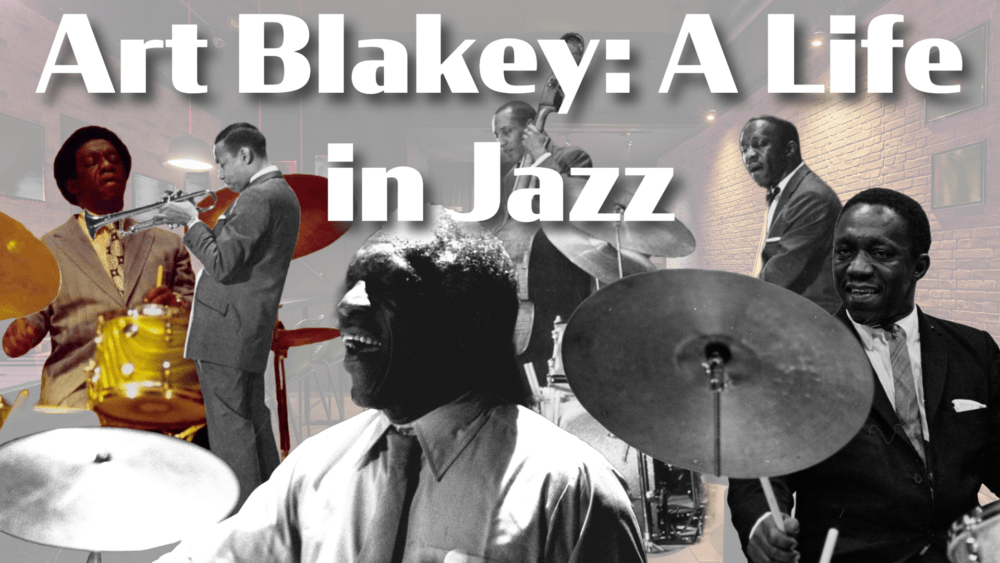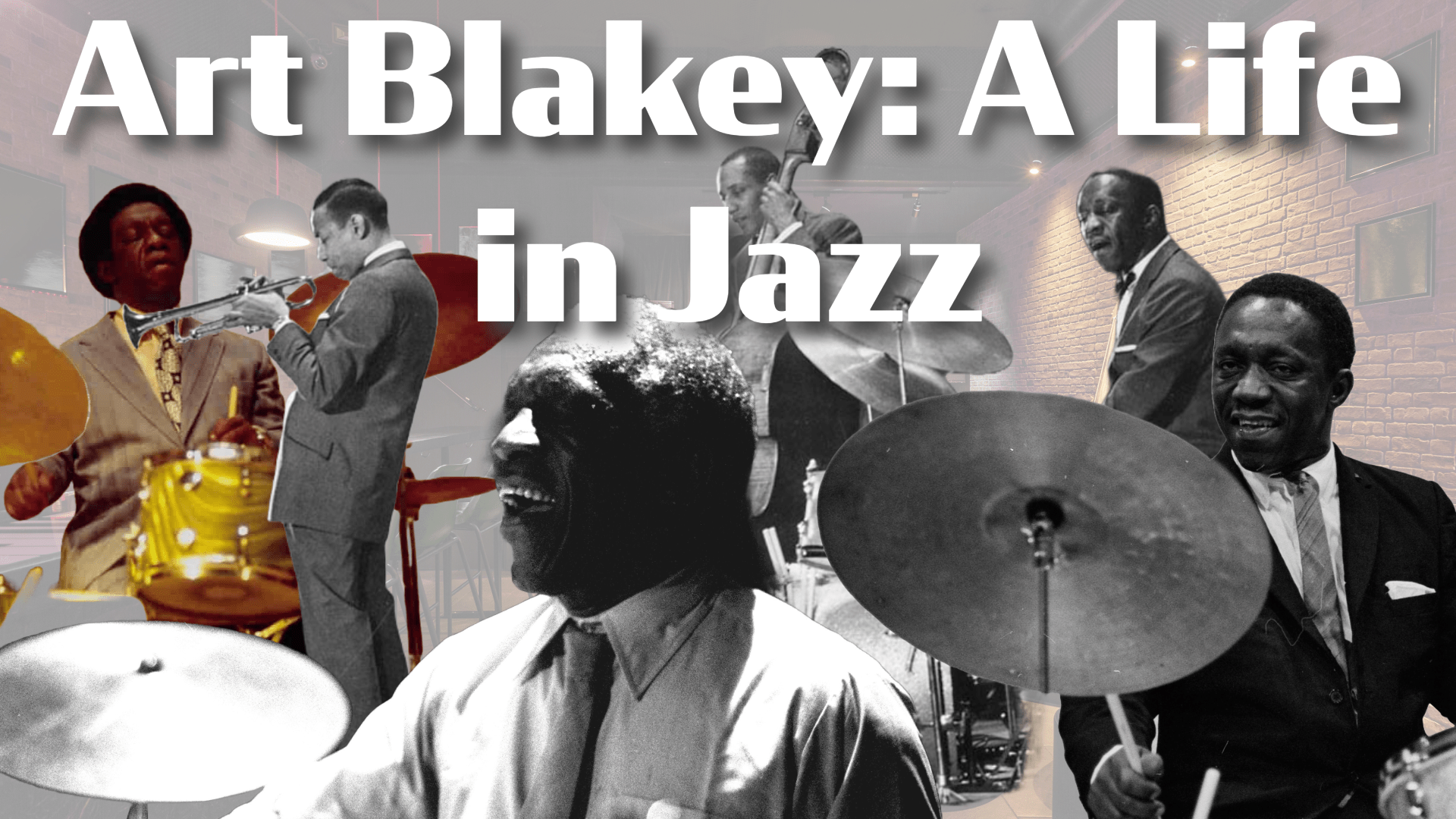
Art Blakey: A Life in Jazz
The Basics
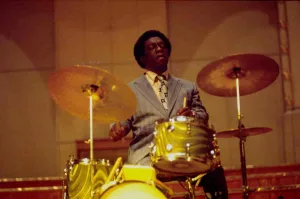 We don’t talk jazz much around the Legends studio, in fact I might be the only one here obsessed with folks like Art Blakey (after whom I named my daughter…no she’s not named “Art” but we did get creative 😉 but be as that may, Art Blakey was a master at his craft, a trailblazing, explosive drummer and musician. Here’s a little bit about the man, the myth and the LEGEND: Arthur “Art” Blakey, (also known as Abdullah Ibn Buhaina after his conversion to Islam), was one of the most influential jazz drummers and bandleaders of the 20th century.
We don’t talk jazz much around the Legends studio, in fact I might be the only one here obsessed with folks like Art Blakey (after whom I named my daughter…no she’s not named “Art” but we did get creative 😉 but be as that may, Art Blakey was a master at his craft, a trailblazing, explosive drummer and musician. Here’s a little bit about the man, the myth and the LEGEND: Arthur “Art” Blakey, (also known as Abdullah Ibn Buhaina after his conversion to Islam), was one of the most influential jazz drummers and bandleaders of the 20th century.
Born on October 11, 1919, in Pittsburgh, Pennsylvania, Blakey’s career spanned over five decades, during which he played a crucial role in the development of bebop and hard bop, subgenres of jazz. Known for his powerful and distinctive drumming style, Blakey left an indelible mark on jazz music, both as a performer and as a mentor to many of the genre’s future stars. This essay delves into Blakey’s life, his musical evolution, and his enduring legacy.
Early Life and Musical Beginnings
Art Blakey was born into a musical environment. Although he began playing the piano, he switched to drums in his early teens after a series of encounters with more accomplished pianists. His early drumming was largely self-taught, and he quickly developed a reputation for his dynamic playing style. By the time he was a teenager, Blakey was already performing professionally in the Pittsburgh area.
In the early 1940s, Blakey moved to New York City, the epicenter of the burgeoning bebop movement. He joined the Fletcher Henderson Orchestra, a significant step in his career, which exposed him to the leading figures in jazz. His tenure with Henderson was followed by a stint with the legendary Billy Eckstine’s big band, where he played alongside future stars like Dizzy Gillespie, Charlie Parker, and Sarah Vaughan.
Rise to Prominence: The Bebop Era
The mid-1940s were a transformative period for jazz, with bebop emerging as a new, complex, and virtuosic style. Blakey was at the forefront of this movement, collaborating with many of its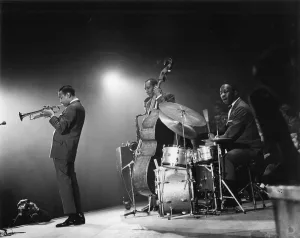 pioneers. His playing was characterized by an assertive, propulsive style that emphasized rhythm and dynamics, setting him apart from his contemporaries.
pioneers. His playing was characterized by an assertive, propulsive style that emphasized rhythm and dynamics, setting him apart from his contemporaries.
In 1947, Blakey made a significant move by forming the Seventeen Messengers, a cooperative band that included Horace Silver and other future jazz luminaries. Although the group was short-lived, it laid the groundwork for Blakey’s future endeavors. Around this time, Blakey also traveled to Africa, where he immersed himself in African rhythms and music, which would later influence his drumming style.
The Birth of the Jazz Messengers
In the mid-1950s, Blakey co-founded the Jazz Messengers with pianist Horace Silver. The group quickly became a breeding ground for young jazz talent, and its formation marked the beginning of Blakey’s most enduring legacy. The Jazz Messengers were instrumental in the development of hard bop, a style that incorporated blues, gospel, and R&B elements into bebop’s complex framework.
The Jazz Messengers’ first album, “Horace Silver and the Jazz Messengers” (1955), was a critical success and established the group’s reputation. Silver’s compositions, combined with Blakey’s dynamic drumming, created a sound that was both sophisticated and accessible. After Silver left the group in 1956, Blakey became the sole leader, and the Jazz Messengers evolved into a rotating ensemble that showcased some of the best young talents in jazz.
Mentor and Innovator
As the leader of the Jazz Messengers, Blakey became known not only for his drumming but also for his mentorship. He had an uncanny ability to identify and nurture young musicians who would go on to become stars in their own right. Over the years, the Jazz Messengers served as a launching pad for numerous jazz legends, including Wayne Shorter, Freddie Hubbard, Lee Morgan, and Wynton Marsalis.
Blakey’s approach to leadership was both demanding and supportive. He encouraged his band members to develop their own voices and often gave them the freedom to contribute compositions to the group’s repertoire. This collaborative spirit kept the Jazz Messengers’ music fresh and relevant, and it ensured that the group remained a vital force in jazz for decades.
Musical Style and Influence
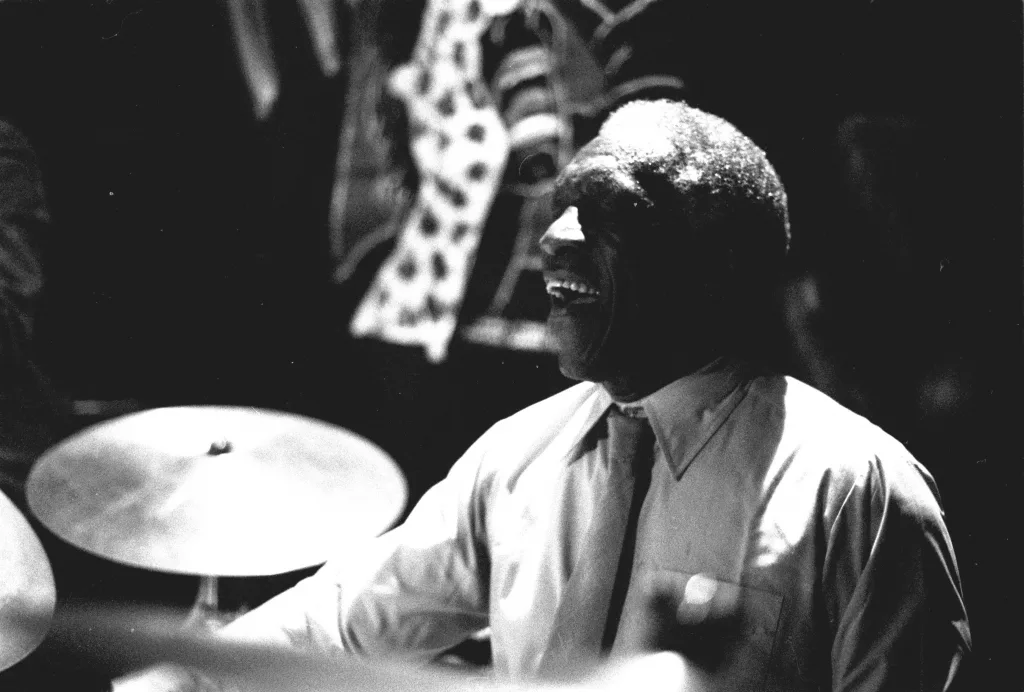
Art Blakey’s drumming was characterized by its power, precision, and expressive range. He was known for his use of polyrhythms, his ability to drive a band with his propulsive rhythms, and his dynamic solos. Blakey’s drumming was deeply rooted in the blues, and he often incorporated elements of African rhythms and gospel music into his playing.
One of Blakey’s most significant contributions to jazz drumming was his use of the press roll, a technique that added a dramatic, explosive quality to his solos. His drumming was also notable for its musicality; he approached the drums not just as a time-keeping instrument but as a vehicle for melodic and harmonic expression.
Blakey’s influence extended beyond his own playing. Through his work with the Jazz Messengers, he helped shape the sound of modern jazz and influenced generations of drummers and musicians. His emphasis on swing, groove, and emotional intensity left a lasting imprint on the genre.
The Later Years and Legacy
In the 1970s and 1980s, Blakey continued to lead the Jazz Messengers, adapting to the changing landscape of jazz while staying true to his musical principles. The group remained a vital institution, attracting new talents and producing high-quality recordings. Blakey’s dedication to the music never wavered, and he continued to perform and record until his death.
Blakey’s impact on jazz was profound and far-reaching. He was not only a master drummer but also a visionary bandleader who played a crucial role in the development of bebop and hard bop. His ability to mentor young musicians ensured that his legacy would endure through the countless artists who came through the ranks of the Jazz Messengers.
Art Blakey passed away on October 16, 1990, but his music and influence live on. His recordings with the Jazz Messengers remain essential listening for jazz enthusiasts, and his contributions to the art form continue to be celebrated. Blakey’s life was a testament to the power of jazz as a dynamic, evolving art form, and his legacy as a drummer, bandleader, and mentor is firmly cemented in the annals of jazz history.
Conclusion
Art Blakey’s life and music are a testament to the transformative power of jazz. From his early days in Pittsburgh to his rise as a leading figure in bebop and hard bop, Blakey’s journey was marked by innovation, mentorship, and a deep commitment to his craft. Through the Jazz Messengers, he not only left an indelible mark on the genre but also ensured that his influence would be felt by future generations. Blakey’s drumming, leadership, and dedication to the music continue to inspire and resonate, making him a true giant of jazz.


